Last week, I left Rome and went to a village called Sicili, which has a single restaurant, a single coffee shop, a single guesthouse and a single pharmacy. Not just me; more than 30 people from different parts of Italy and Europe did the same thing.
Since we couldn’t all fit in the village guesthouse, we dispersed to the nearby guesthouses.
The reason for our visit was the summer camp organized by the Oleum Association. This is a camp organized for the purpose of training olive oil producers. When the “patron” of the camp is Nicolangelo Marsicani, a master who not only produces one of the best olive oils in Italy but also presses the olives of the entire region with the same quality, you go to the top of the mountain with your eyes closed.
Who is this Marsicani?
An olive oil pressing facility can either make or break olives. You have collected olives from centuries-old trees, taken them to the press without waiting, but if the pressing is not done well, the quality of your olives will have no meaning. Take care of the trees like your eyes for a year, if a good job is not done in the pressing facility, this year’s labor can be wasted instantly during a process that does not last an hour.
Therefore, the maintenance of the pressing facility, the technology of the machines, the level of knowledge of the presser are the main factors that determine the fate of your glass-like olives. A single proper pressing facility can revive a whole region and turn the region into a brand.
There are countless examples of this in Italy. One of them is the pressing facility of Nicolangelo Marsicani, whom we were a guest of. This name, who brings together producers from all over Italy and olive oil experts from all over the Mediterranean in a summer camp in his village where 364 people live, is one of the most important figures of Italian olive oil production.
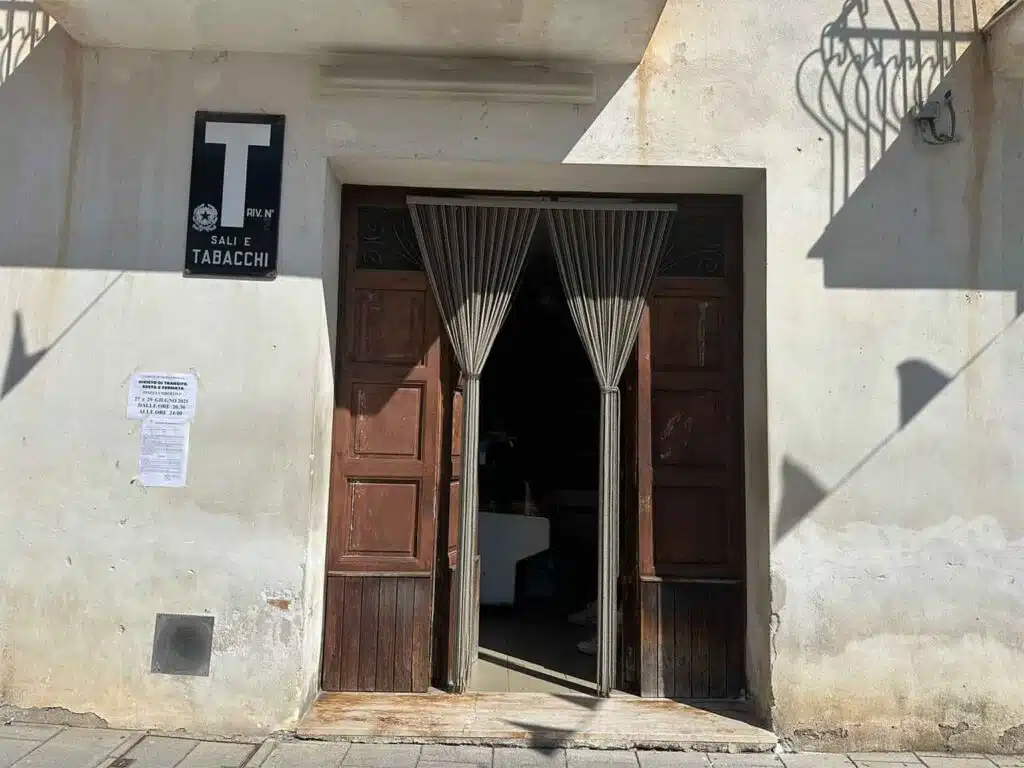
The Philosophy is Simple; Let it be One, but Let it be Good
A village with a record that has only one restaurant; it has no star, no hat, nothing. Although the menu is not pages long, everything that comes out of the kitchen and ovens is delicious. They use regional products in their dishes, most importantly, great olive oil.
There is only one coffee shop in the village, it is diagonally across from the restaurant in the square. Since there is no space to put a table in front of it, two tables are set up in the shadow of the building opposite. The coffee is decent and clean. Espresso is 1 Euro.
There is one pharmacy, one grocery store that also sells stamps and tobacco; that is all there is to the market. They are one, but they are all excellent.
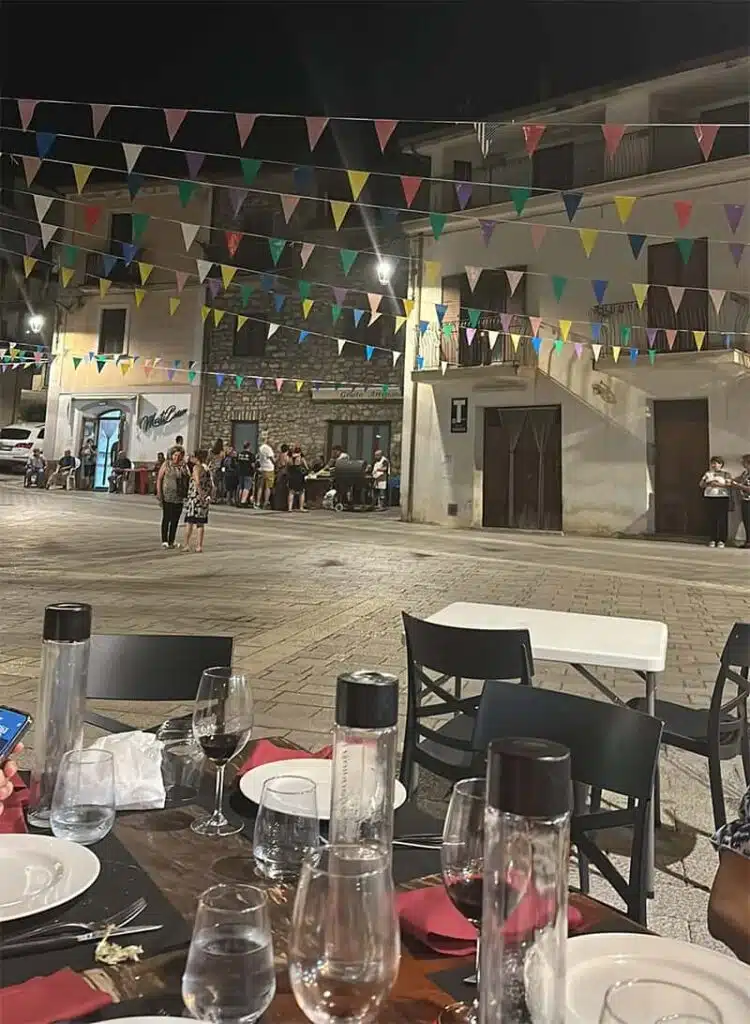
In our big cities where we think we have freedom of choice, we are condemned to eat mediocre food in hundreds of restaurants. Here, people do not have freedom of choice, but they do not need to choose, the philosophy is simple; have one, but let it be good.
Here, in this village where there is one of everything, Master Marscani has been making history for the last 30 years. When you look at it, he has ensured the birth of many high-level brands that compete with him by ‘pressing’ not only his own olives, but also the olives of the entire region.
A few years ago, the facility received the Pressing Facility of the Year Award in the guide that evaluated Italian olive oil production, where I was a taster. After the evaluation of the regional oils, it was seen that Marsicani’s own brand was a few points lower than the products pressed for others, and because the master did not press his neighbors’ olives to a lower tone, he was given the title of the facility of the year that year.
We are talking about nuances that very professional noses can notice, the master’s oils were as good as those pressed for others, but probably for a reason related to the olives that year, the ‘nose’ was 1-2 points lower than the others. In other words, Marsicani’s responsibility to the region and the value he gave to the region were rewarded that year.
Marsicani, who consults producers in different countries of the world, quickly shared the information that the customs duties on olive oil were lifted in Brazil, where he provided consultancy last year, with all the producers he knew, saying “It is the right time to enter this market” and ensuring that the producers prepared a marketing policy as a group.
A visionary who has transformed his idealism into a business model, aware that instead of selling only his own oil, it will be beneficial for everyone if Italian olive oils take their place in the market together. He does not hesitate to use his expert credit in the international market as a reference for others.
Oleum Summer Camp
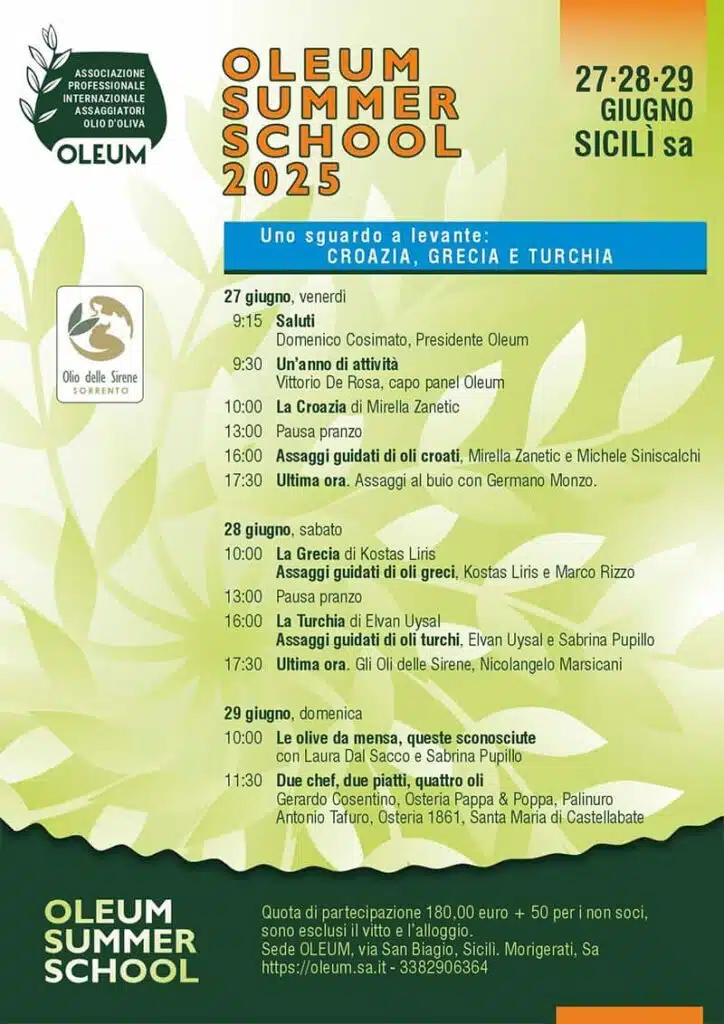
Oleum is an international olive oil producers’ association. Marsciani has made great efforts in its establishment and survival. His right-hand man is Marco Rizzo, one of the best representatives of the young generation of producers who produce masterpiece oils in the region.
The Sicili municipality allowed them to use the building used as the village’s social facility for the camp without expecting a fee. A serious tasting hall has been prepared on the upper floor. Panel members gather twice a week and do tastings. This both ensures that the region’s oils are identified, the tasters are trained and the new generation of qualified tasters are trained.
They organize olive oil competitions as an association. These competitions are not the competitions we know. One of these is Mignolo D’oro, chaired by Sabrina Pupillo and organized only for Gargano region oils…
Participation in the competition is free of charge and producers can meet with the jury members one-on-one by making an appointment in advance on the competition days. The jury and producer taste the oil together and provide technical feedback. These meetings are not subject to any fee. It is an open competition but no one is held responsible and no blue beads are distributed. This competition has a big share in the momentum that the regional oils have gained in the last few years.
Another competition is Olio delle Sirene, where there is one winner in each category. International producers can participate in this competition free of charge, while Italians are charged a small fee. It is a competition with few and concise winners, and it has a weight in the sector and with international distributors.
Most of the producers who came to the summer camp held in Sicili from all over Italy already have a certain place in the market. Such meetings are valuable for understanding what others are doing and for exchanging ideas. Small but big steps towards growing together and becoming a country brand.
This year, the summer school included three days of pressing techniques lessons followed by tastings focused on Croatia, Türkiye and Greece. Oleum wanted to bring the olive varieties, how they are pressed, and the success and problems of other Mediterranean producing countries to the Italian producer, in addition to raising their own standards. This vision that the village brought to Italian olive farming is to be applauded.
The Rise of Turkish Olive Oils Continues
During my last visit to Turkey, I brought a suitcase full of the products I knew and tasted to Italy to bring to this training. I asked for oils made from a single variety of olive from Buta Assos, Hermus, Nova Vera, Olydia and Saf Toprak. They all sent them, I would like to thank them again from here.
With a few months left until the new season, the oils have lost their ‘noses’ a bit. They do not have as strong aromas as at the beginning of the season, but the situation was the same in Greece, Croatia and some Italian oils. We started our tasting with Nova Vera’s Trilye. It has preserved its body well. It had a delicious pungency that reminded us of black pepper and garlic.
After Trilye, we went to Ayvalık. Nova Vera, Hermus and Buta Assos Ayvalık were tasted. Nova Vera’s Ayvalık variety was tired compared to Trilye. However, it still preserved its sweet almond and slightly pungent taste.
Buta Assos Ayvalık also had a similarly mild but delicious pungent taste.
I had tasted Hermus Ayvalık at the beginning of this season. It was the producer’s oil that excited me the most this year. “An Ayvalık olive that is not afraid of being olive oil,” I said. Ayvalık, known and loved for its low bitterness/pungent taste and sweetness on the palate, was a bomb on both the nose and the palate. Bitter wild herbs and arugula, along with the green almonds, were saying “I am here” on both the nose and the palate, and had a delicious bitterness/pungent taste. Both the nose and the palate had ‘calmed down’ due to the season, but it was still a product that carried strong traces of its early season characteristics.
Ayvalık Italian producers were not very excited. Our Ayvalık is a bit calm for the Italian market, which is used to more ‘muscular’ products. I explained how we use this delicate oil, which does not have high phenol values by nature, and that it is one of the most popular varieties in the Turkish market. They said it could be ideal for ‘calm’ oil-loving markets such as Germany and Japan. I think a serious blending study should be done for Ayvalık, which does not have a very high resistance to time. Mixing this delicate olive, whose performance started to decline after March, with higher phenol versions will increase its performance.
After Ayvalık, we move on to Buta Assos’ Hanım Parmağı. Buta Assos did a good job in understanding the potential of this wonderful olive, which is unique to the Çanakkale region. Hanım Parmağı has a very soft nose, currently reminiscent of ripe tomatoes, but it still has a lively and strong bitterness and pungency on the palate. It surprised us with its enjoyable complexity and multi-dimensionality on the palate.
We bought Yamalak Sarısı on Hanım Parmağı. We tasted two different styles from Nova Vera and Buta Assos. Nova Vera Yamalak Sarısı was able to maintain its freshness on the nose, offering a rich dowry on the palate ranging from wild herbs to black pepper. Buta Assos’ Yamalak Sarısı had particularly harsher lines on the palate.
We tasted Olidya’s Tomat and Tekir together. The oils of the olives that remind us of peas, fava, and asparagus and smell of gardens have not yet reached their true potential. Since their yield is low compared to other oils, they are pressed as a blend when their chances of being table-worthy are over. However, there is nothing like well-pressed Tomat and Tekir for spring dishes with olive oil. Olidya is one of the rare producers who properly utilize these beautiful olives.
Finally, we went to Memecik, the crown jewel of the Southern Aegean. Nova Vera Memecik is a clean olive oil, probably preferred for a variegated harvest. They have chosen to work with a more mature, calm version of Memecik. I pressed the Pure Land Memecik this year. It was a harvest close to variegated mountain olives. It had a very festive nose when pressed. It was a bomb from the green apple specific to Memecik to the tomato leaves and nettles. Likewise, the palate confirmed the promises of the nose with its last strength. The nose was tired as we tasted it at the Oleum Summer School. The palate maintained its excitement and had a beautiful continuity.
Closing
The closing of the event was done with an olive oil food pairing, or rather an association study. The training, which started with how the oil was made and continued with the tasting, of course ended with how it would come to the table.
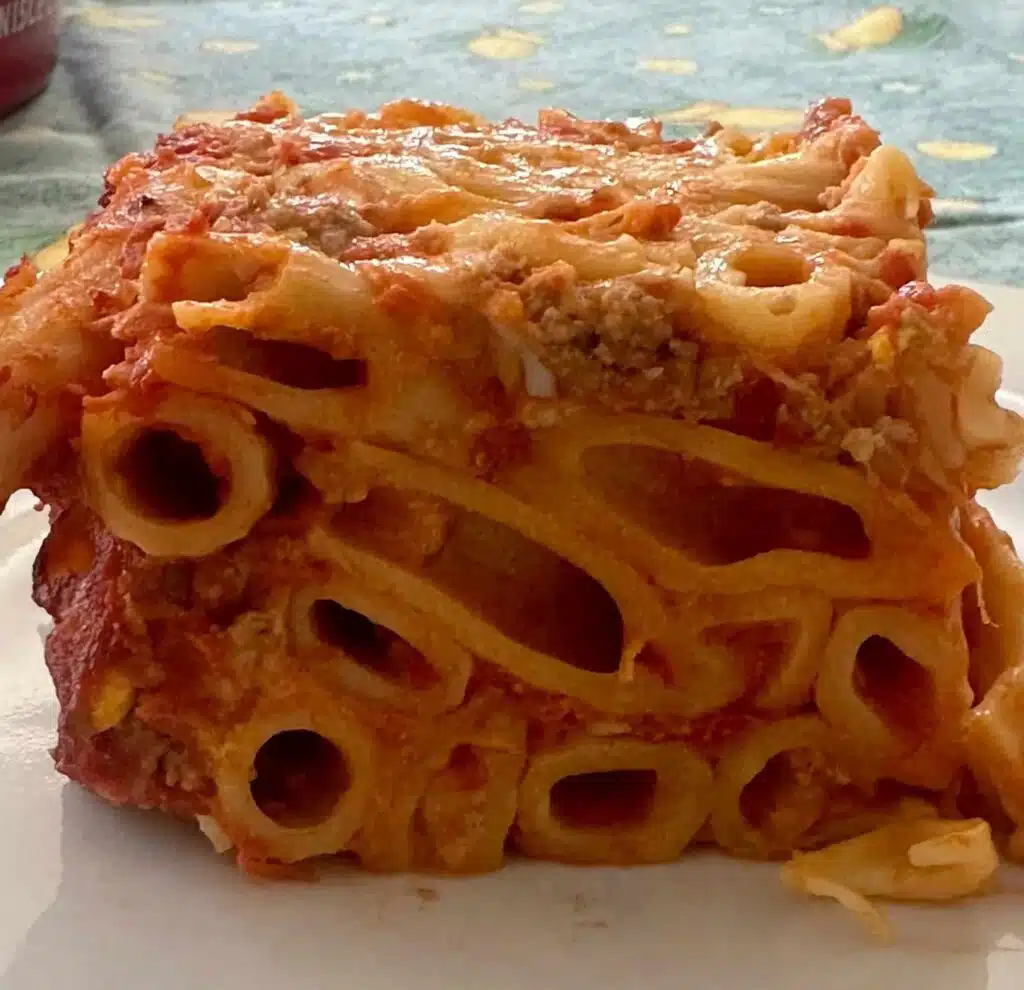
We started by tasting two dishes of two chefs from Palinuro and Pompei, where olive oil was one of the heroes. One was calamari tagliatelle, the other was a breaded tomato dish. The calamari was cooked perfectly on low heat and cut into tagliatelle pasta with a salami cutter. Both of them had prepared extremely simple, at the highest possible level of taste, with all ingredients, including olive oil, walking on the podium when their turn came, and no one was ahead of the other.
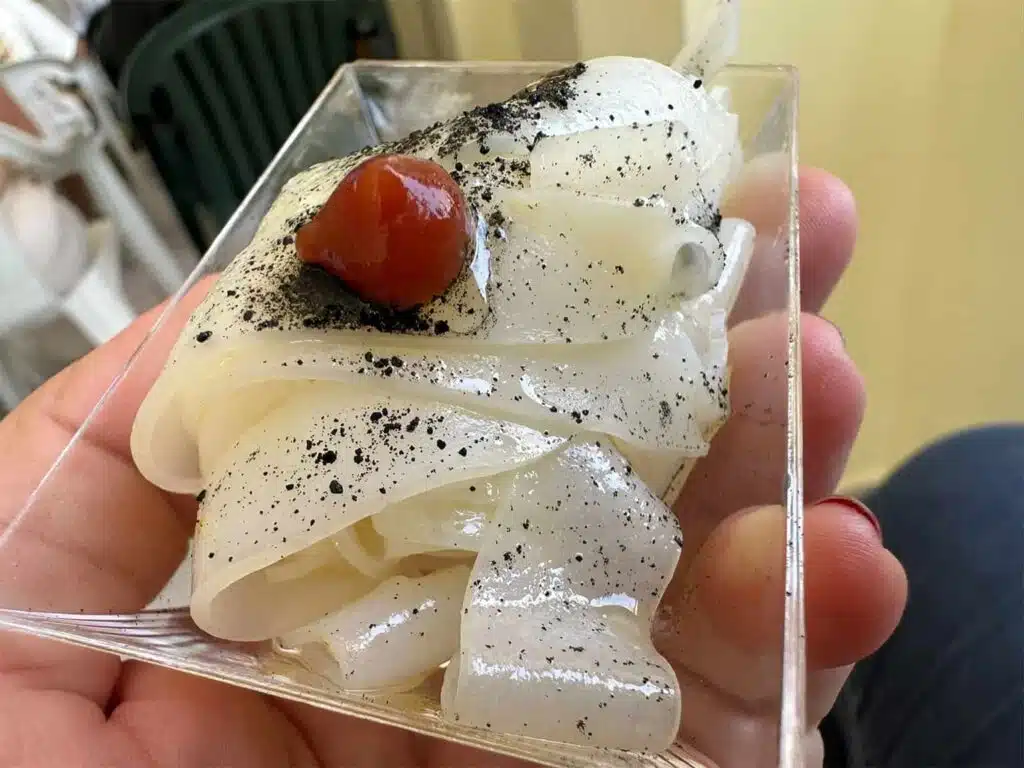
When they said they would go to the riverside for the closing dinner of the camp, I thought they had gotten bored of the village restaurant and preferred to go to a nearby riverside restaurant. When we arrived at the river, baskets started coming out of the cars. Our lunch was good mozzarella, good bread, good tomatoes and salami.
The masters of Italian olive oil production put their heads together and cut and chopped everything under a tree. Since we were late, there was no space left in the areas prepared as picnic areas. The picnickers next to us were barbecuing. First they sent us their bread, then their steaks.
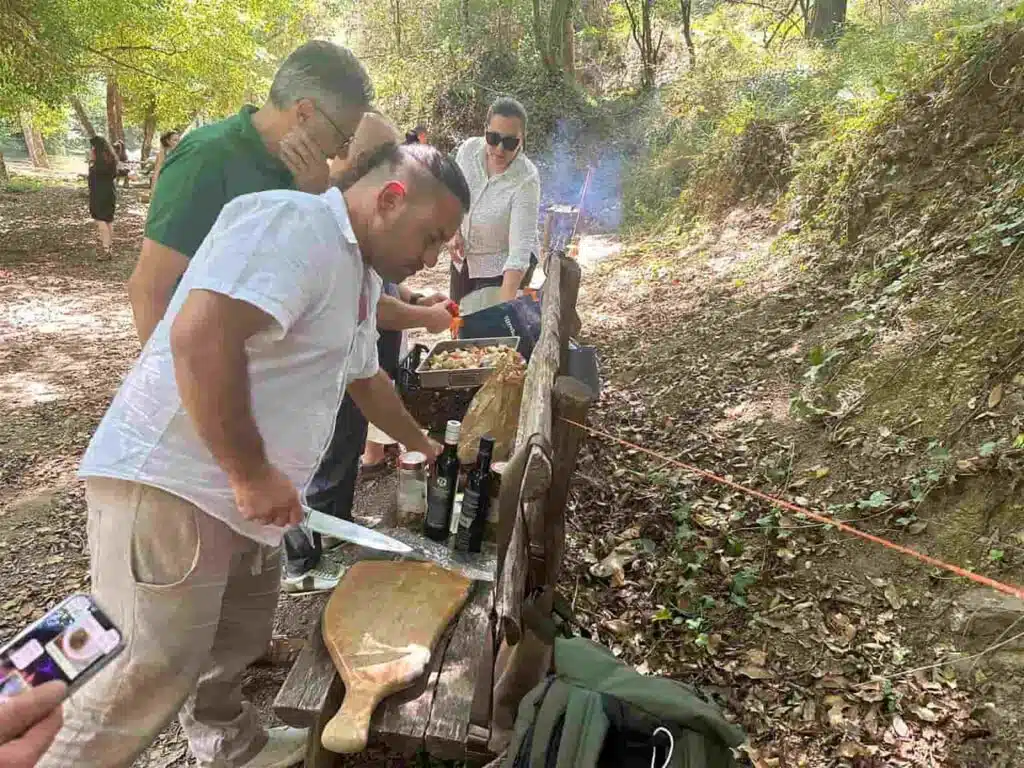
I remembered that two years ago, they had us in the kitchen as judges for the closing dinner of Magnifico, one of Italy’s most important olive oil competitions, and we had all made and eaten fresh pasta together.
Italians are very good at using the binding ability of olive oil to bind people together. Making people feel like they are doing something authentic, that they are part of something, is directly related to success.
What I Taught/Learned in Summer School
Our olive oils have come a long way in the last 10 years. A few years ago, it was not possible to talk about single-variety, well-pressed olive oils. New olive varieties are added to this caravan every year.
The highest pressing costs in Europe are in Turkey. Even cooperatives receive an average of 15 percent pressing share. Turkey needs Marscanis who will do their job very well and press at more affordable prices.
We are in second place after Spain in terms of the number of olive trees. If a policy of cutting down old trees and moving them to make new afforestation is pursued, these figures may turn into numbers that do not benefit quality. There is no valid reason for the uprooting of old olives. Similarly, the fact that most of the newly established olive groves start yielding early and produce a lot of oil, prioritizing Trilye olives, has many disadvantages in many areas from biodiversity to market differentiation strategies.
This year, Turkey became the world’s second-largest olive oil producing country after Spain. This is a very important result. However, we should now focus on consumption targets along with production. Turkey still consumes less than 2 liters of olive oil per person. For this reason, a second goal should be to increase quality while producing so much, and especially to bring domestic consumption to a level it deserves.
Finally, these oils need to be marketed in a way that makes the labor behind them happy.
Written by Elvan Uysal Bottoni
